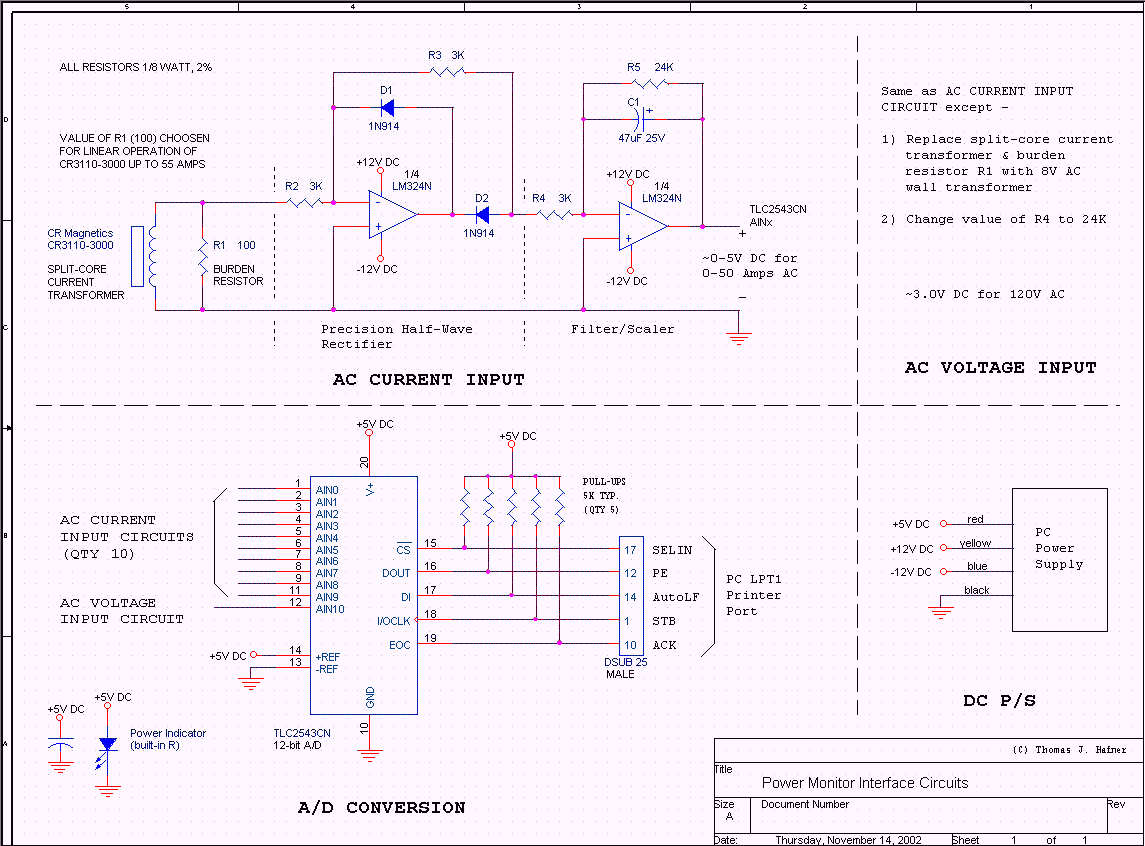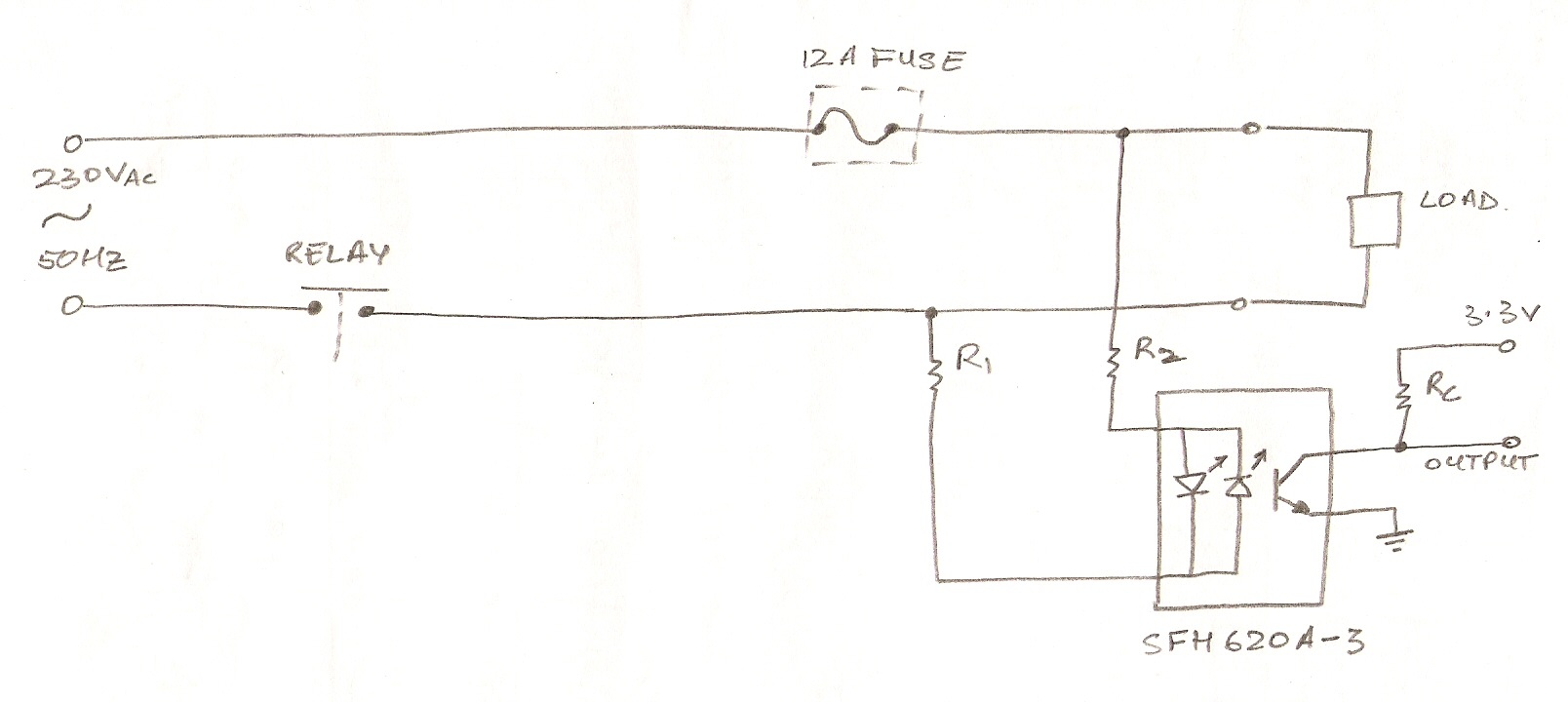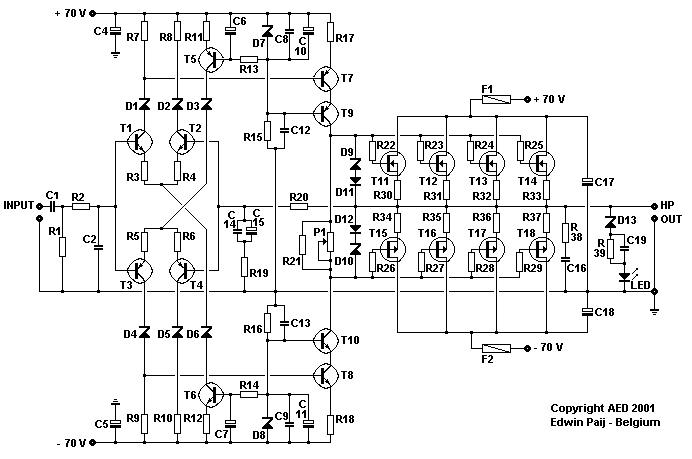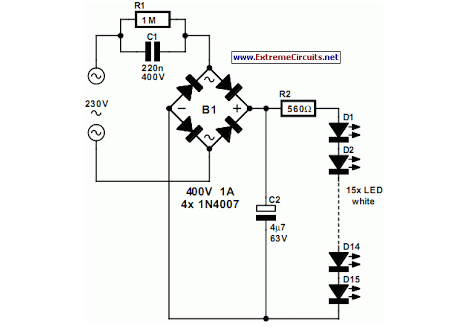
Soft Start For Switching Power Supply

A switching power supply with an output voltage significantly lower than its input voltage exhibits an interesting characteristic: the current drawn by the supply is less than its output current. However, the input power (UI) is greater than the output power. Another important consideration is that if the input voltage at startup is too low, the regulator may attempt to draw the maximum current. If the power supply cannot handle this demand, it may fail or the fuse may blow. Therefore, it is advisable to disable the regulator at startup (via the on/off input) until the relevant capacitor is charged. Once the regulator begins to draw current, the charging current should have already decreased to a level that does not overload the voltage source. The circuit in the diagram provides an output voltage of 5 V and is powered by a 24 V source. The regulator does not need to be disabled until the capacitor is fully charged; when the voltage across the capacitor reaches half or more of the input voltage, operation is stable. This is why the zener diode in the diagram is rated at 15 V. Many regulators produced by National Semiconductor feature an integral on/off switch, which is utilized in this circuit. The input is designed for TTL signals and typically consists of a transistor with an externally accessible base. This allows for a higher switching voltage to be applied through a series resistor, which in this circuit is 22 kΩ. When the voltage across the capacitor reaches approximately 17 V, transistor T1 activates, thereby enabling the regulator.
The switching power supply circuit is designed to convert a higher input voltage (24 V) into a stable lower output voltage (5 V). The circuit incorporates a regulator that is sensitive to the input voltage levels, particularly at startup. The key to ensuring reliable operation lies in managing the inrush current when the circuit is powered on. To prevent damage to the power supply or the circuit itself, a mechanism is implemented to disable the regulator until the input capacitor is sufficiently charged.
Upon powering the circuit, the input capacitor begins to charge. The zener diode, rated at 15 V, serves to clamp the voltage and protect the circuit from excessive voltage levels. The circuit is designed so that when the voltage across the capacitor reaches around 17 V, the transistor T1 is activated. This action enables the regulator, allowing it to begin supplying the desired output voltage of 5 V. The inclusion of a series resistor (22 kΩ) allows for the application of higher TTL signal voltages to control the base of the transistor, enabling flexibility in the control signal used to switch the regulator on or off.
The overall design ensures that the power supply operates efficiently while preventing overload conditions. This approach not only enhances the reliability of the circuit but also safeguards against potential failures due to excessive input current at startup. The integration of an on/off switch within the regulator simplifies the control mechanism and provides an effective solution for managing the power supply's operational states.Switching power supply whose output voltage is appreciably lower than its input voltage has an interesting property: the current drawn by it is smaller than its output current. However, the input power (UI) is, of course, greater than the output power. There is another aspect that needs to be watched: when the input voltage at switch-on is too low , the regulator will tend to draw the full current. When the supply cannot cope with this, it fails or the fuse blows. It is, therefore, advisable to disable the regulator at switch-on (via the on/off input). until the relevant capacitor has been charged. When the regulator then starts to draw current, the charging current has already dropped to a level which does not overload the voltage source. The circuit in the diagram provides an output voltage of 5 V and is supplied by a 24 V source. The regulator need not be disabled until the capacitor is fully charged: when the potential across the capacitor has reached a level of half or more of the input voltage, all is well.
This is why the zener diode in the diagram is rated at 15 V. Many regulators produced by National Semiconductor have an integral on/off switch, and this is used in the present circuit. The input is intended for TTL signals, and usually consists of a transistor whose base is accessible externally.
This means that a higher switching voltage may be applied via a series resistor: the value of this in the present circuit is 22 k. When the voltage across the capacitor reaches a level of about 17 V, transistor T1 comes on, whereupon the regulator is enabled.
🔗 External reference
The switching power supply circuit is designed to convert a higher input voltage (24 V) into a stable lower output voltage (5 V). The circuit incorporates a regulator that is sensitive to the input voltage levels, particularly at startup. The key to ensuring reliable operation lies in managing the inrush current when the circuit is powered on. To prevent damage to the power supply or the circuit itself, a mechanism is implemented to disable the regulator until the input capacitor is sufficiently charged.
Upon powering the circuit, the input capacitor begins to charge. The zener diode, rated at 15 V, serves to clamp the voltage and protect the circuit from excessive voltage levels. The circuit is designed so that when the voltage across the capacitor reaches around 17 V, the transistor T1 is activated. This action enables the regulator, allowing it to begin supplying the desired output voltage of 5 V. The inclusion of a series resistor (22 kΩ) allows for the application of higher TTL signal voltages to control the base of the transistor, enabling flexibility in the control signal used to switch the regulator on or off.
The overall design ensures that the power supply operates efficiently while preventing overload conditions. This approach not only enhances the reliability of the circuit but also safeguards against potential failures due to excessive input current at startup. The integration of an on/off switch within the regulator simplifies the control mechanism and provides an effective solution for managing the power supply's operational states.Switching power supply whose output voltage is appreciably lower than its input voltage has an interesting property: the current drawn by it is smaller than its output current. However, the input power (UI) is, of course, greater than the output power. There is another aspect that needs to be watched: when the input voltage at switch-on is too low , the regulator will tend to draw the full current. When the supply cannot cope with this, it fails or the fuse blows. It is, therefore, advisable to disable the regulator at switch-on (via the on/off input). until the relevant capacitor has been charged. When the regulator then starts to draw current, the charging current has already dropped to a level which does not overload the voltage source. The circuit in the diagram provides an output voltage of 5 V and is supplied by a 24 V source. The regulator need not be disabled until the capacitor is fully charged: when the potential across the capacitor has reached a level of half or more of the input voltage, all is well.
This is why the zener diode in the diagram is rated at 15 V. Many regulators produced by National Semiconductor have an integral on/off switch, and this is used in the present circuit. The input is intended for TTL signals, and usually consists of a transistor whose base is accessible externally.
This means that a higher switching voltage may be applied via a series resistor: the value of this in the present circuit is 22 k. When the voltage across the capacitor reaches a level of about 17 V, transistor T1 comes on, whereupon the regulator is enabled.
🔗 External reference





